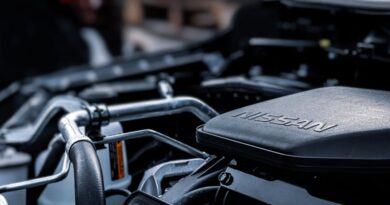Exploring the Difference: Automatic vs. Manual Rental Cars
When it comes to renting a car, one of the decisions you’ll have to make is whether to go for an automatic or manual transmission. This seemingly simple choice can have a significant impact on your driving experience, comfort, and even cost. In this comprehensive guide, we will delve into the world of automatic vs. manual rental cars, exploring the pros and cons of each, historical perspectives, current trends, and much more. So buckle up and let’s hit the road!
The Evolution of Transmission Systems

Before we dive into the specifics of automatic and manual rental cars, let’s take a step back and explore the evolution of transmission systems. Manual transmissions, also known as stick shifts, have been around for over a century and were the standard for many years. Drivers had to manually shift gears using a clutch pedal and a gear stick. On the other hand, automatic transmissions, which were first introduced in the early 1940s, allow for seamless gear changes without the need for manual intervention.
Over the years, automatic transmissions have gained popularity due to their ease of use, especially in heavy traffic or hilly terrains. However, manual transmissions have their loyal followers who appreciate the control and engagement they offer. When it comes to renting a car, understanding the differences between these two systems is crucial in making an informed decision.
Cost Considerations

One of the primary factors that influence the choice between automatic and manual rental cars is cost. Automatic transmission vehicles are generally more expensive to rent compared to manual ones. This is because automatic cars are more complex and have additional components that require maintenance and repair. As a result, rental companies often charge a premium for automatic vehicles.
On the other hand, manual transmission cars are more affordable to rent, making them a budget-friendly option for many travelers. If you’re looking to save some money on your rental car, opting for a manual transmission vehicle might be the way to go. However, it’s essential to consider your comfort and driving experience as well, as the cost savings might not be worth the potential inconvenience for some drivers.
Driving Experience and Comfort

When it comes to the driving experience, the choice between automatic and manual rental cars can significantly impact your comfort and enjoyment on the road. Automatic transmissions are known for their smooth and effortless gear shifts, making them ideal for urban driving or long highway journeys. With an automatic car, you can focus more on the road and less on shifting gears, which can be a boon in heavy traffic.
On the other hand, manual transmissions offer a more engaging driving experience for enthusiasts who enjoy the thrill of shifting gears manually. Some drivers prefer the control and connection to the vehicle that a manual transmission provides. However, driving a manual car in stop-and-go traffic or on steep inclines can be challenging for some drivers, especially those who are not used to it.
When choosing between automatic and manual rental cars, consider your driving habits, the type of roads you’ll be driving on, and your comfort level with each transmission system. Ultimately, the driving experience and comfort should be a significant factor in your decision-making process.
Fuel Efficiency and Performance

Another essential aspect to consider when comparing automatic and manual rental cars is fuel efficiency and performance. In general, manual transmissions are known to be more fuel-efficient than automatic transmissions. This is because manual cars allow drivers to control the gear shifts, which can help optimize fuel consumption and improve overall efficiency.
On the other hand, automatic transmissions have evolved significantly in recent years, with many modern automatic cars offering comparable fuel efficiency to manual ones. Some automatic vehicles come equipped with advanced technologies such as continuously variable transmissions (CVT) or dual-clutch transmissions (DCT), which can improve fuel economy and performance.
When renting a car, it’s essential to consider your fuel efficiency needs and driving style. If you’re looking to save on fuel costs and prioritize efficiency, a manual transmission car might be the right choice for you. However, if you prefer the convenience of an automatic car and are willing to pay a bit more for it, you can still find fuel-efficient automatic vehicles on the market.
Availability and Popularity
When it comes to renting a car, the availability and popularity of automatic and manual transmission vehicles can vary depending on the location and rental company. In some regions, automatic cars are the norm, while in others, manual transmissions are more prevalent. Understanding the availability and popularity of each type of transmission can help you make an informed decision when renting a car.
In general, automatic transmission cars are more popular in North America, Asia, and other regions where traffic congestion is a common issue. Many rental companies in these areas primarily offer automatic cars to cater to the preferences of their customers. On the other hand, manual transmissions are still popular in Europe, Australia, and other regions where driving enthusiasts value the engagement and control they provide.
Before booking a rental car, it’s essential to check the availability of automatic and manual transmission vehicles at your chosen location. Some rental companies may have limited options in terms of transmission types, so it’s best to book in advance and specify your preference to ensure you get the type of car you want.
Technology and Innovation
As technology continues to advance, the line between automatic and manual transmissions is becoming increasingly blurred. Many modern automatic cars come equipped with advanced features such as paddle shifters, sport mode, and adaptive cruise control, allowing drivers to customize their driving experience and performance.
Similarly, manual transmissions are also evolving, with some high-performance cars offering automated manual transmissions or dual-clutch transmissions for faster and smoother gear changes. These advanced technologies combine the best of both worlds, providing the engagement of a manual transmission with the convenience of an automatic one.
When renting a car, it’s essential to consider the technological features and innovations available in both automatic and manual transmission vehicles. Whether you prefer the simplicity of an automatic car or the control of a manual one, there are plenty of options on the market that cater to different driving preferences and needs.
Common Misconceptions
There are several common misconceptions surrounding automatic and manual rental cars that are worth debunking. One of the most prevalent myths is that manual cars are more difficult to drive than automatic cars. While it’s true that driving a manual car requires some practice and coordination, once you get the hang of it, it can be just as easy as driving an automatic car.
Another misconception is that automatic cars are always more convenient and user-friendly than manual cars. While automatic cars offer a hassle-free driving experience, some drivers enjoy the engagement and control that manual transmissions provide. It ultimately comes down to personal preference and comfort level when choosing between automatic and manual rental cars.
Comparative Analysis
When comparing automatic and manual rental cars, it’s essential to consider the key differences and similarities between the two. Automatic cars offer convenience and ease of use, making them ideal for daily commuting or long road trips. On the other hand, manual cars provide a more engaging driving experience and better fuel efficiency for driving enthusiasts.
In terms of cost, manual cars are generally more affordable to rent than automatic cars, making them a budget-friendly option for many travelers. However, the availability of manual transmission cars can vary depending on the location and rental company, so it’s essential to check in advance and specify your preference when booking a rental car.
FAQs
Here are some frequently asked questions about automatic vs. manual rental cars:
1. Can I choose the type of transmission when renting a car?
Yes, most rental companies allow you to specify your preference for automatic or manual transmission when booking a rental car. Make sure to check in advance and confirm the availability of your preferred transmission type.
2. Are automatic cars more expensive to rent than manual cars?
Yes, automatic cars are generally more expensive to rent due to their complex nature and additional maintenance costs. Manual cars are more budget-friendly, making them a popular choice for cost-conscious travelers.
3. Which type of transmission is more fuel-efficient?
In general, manual transmissions are more fuel-efficient than automatic transmissions. However, many modern automatic cars offer comparable fuel efficiency thanks to advanced technologies such as CVT and DCT.
4. Is driving a manual car more challenging than driving an automatic car?
Driving a manual car requires some practice and coordination to master the gear shifts. However, once you get the hang of it, it can be just as easy as driving an automatic car. It all comes down to personal preference and comfort level.
To Wrap Things Up
Choosing between automatic and manual rental cars can be a significant decision that impacts your driving experience, comfort, and budget. Whether you opt for the ease of an automatic car or the engagement of a manual one, it’s essential to consider your driving habits, fuel efficiency needs, and personal preferences when making your choice.
Remember that both automatic and manual transmission vehicles have their advantages and drawbacks, so it’s crucial to weigh the pros and cons of each before making your decision. Whether you’re a seasoned driver or a beginner, finding the right rental car that suits your needs and preferences can enhance your travel experience and make your journey more enjoyable.




